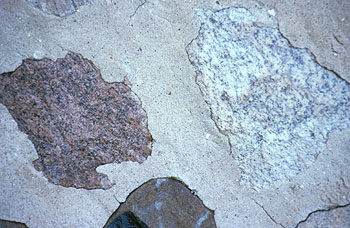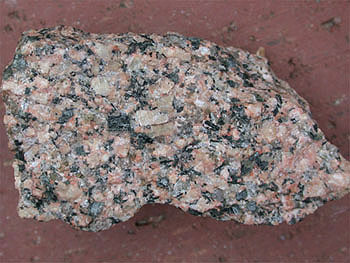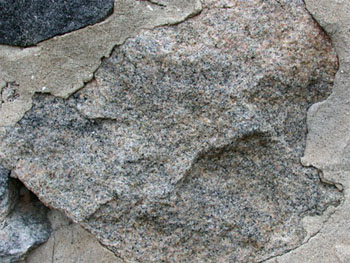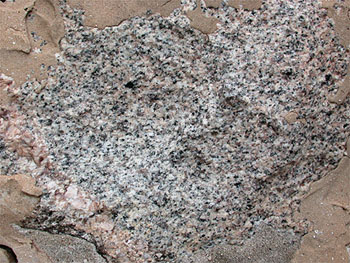Granite: Coarse-Grained Felsic Rock
Most granites are light gray to pink in color, but gray and dark red granites are common, too. All granites contain quartz and K-feldspar. If the K-feldspar is white, the granites are light gray; if the feldspar is pink or red, the granite is pink or red. If feldspars of two colors are present, you have too look for the striations of plagioclase to determine which is which. Biotite or hornblende comprise the dark minerals, and muscovite may add some silvery flakes to the mix.
|
|
These two granites illustrate the color variations common to granites. The dark pink granite on the left is dominated by K-feldspars that happen to be pink. The white granite on the right has white K-feldspars.
Both share a speckled appearance stemming from their coarse-grained textures.
|

|
|
This close-up shows K-feldspars (pink), plagioclase (tan), quartz (gray), and amphibole (black).
Click on the image for a hand-lens view of this sample.
|

|
|
This is a relatively fine-grained granite.
Click on the image for a close-up. The translucent gray quartz is easy to spot, there are yellowish and pink feldspars (not clear which is K-feldspar), and the small black minerals are either hornblende or biotite (you can't tell from the photo).
|

|
|
This is a coarse-grained granite.
Click on the image to see the close-up: translucent dark gray is quartz, white and pinkish are the two feldspars (not clear which is which), black is biotite, and the silvery flecks are muscovite.
|

|
|




